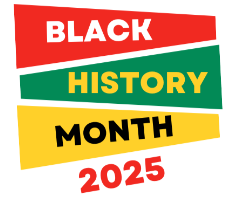History

Our aims for history at St Gabriel’s Catholic Primary School:
- To reflect the St Gabriel’s Mission Statement.
- To inspire the children to have a curiosity and understanding of events, places, and people throughout history.
- To learn about the major events in the history of our country and of the world using investigative, analytical and communication skills. Additionally, children will learn how these events may have influenced one another,
- To develop a chronological knowledge within which the children can organise their understanding of the past.
- To understand how the past was different from the present and that people of other times and places may have had different values and attitudes from ours.
- To develop an understanding of the history of our local area and how life may be different now.
Intent
In line with the school development plan, it is our intent that children will ensure a history curriculum which is knowledge-rich, skill based and meets the needs of all our pupils and encompasses offers of wider opportunities and interests to contribute to the development of our pupils’ cultural capital.
Our aim at St Gabriel’s Catholic Primary School is to encourage pupils to develop an appreciation and understanding of the past, evaluating a range of primary and secondary sources. Our historians will also be able to explain clearly how these sources give us an insight about how people around the world used to live and how these interpretations may differ. Pupils will be taught to make links between these areas of learning, with the aim of developing engaged, motivated and curious learners that can reflect on the past and make meaningful links to the present day.
Our history curriculum has been designed to cover all of the skills, knowledge and understanding as set out in the National Curriculum. The National Curriculum states that ‘a high-quality history education will help pupils gain a coherent knowledge and understanding of Britain’s past and that of the wider world. It should inspire pupils’ curiosity to know more about the past.’
History is delivered through subject specific teaching organised into units. Meaningful links with other subjects can be made to strengthen connections and understanding for pupils.
Implementation
Teachers are encouraged to start lessons by revisiting prior knowledge as often as possible. This will be scaffolded to support children to recall previous learning and make connections. Staff will model the subject-specific vocabulary, knowledge and skills relevant to the learning to allow them to integrate new knowledge into larger concepts. We support learning with trips to inspire our children and widen their cultural capital. Teachers are also encouraged to use a range of resources such as videos, photographs and newspaper articles during lessons to help create immersive learning experiences.
Impact
Our history curriculum is taught to a high quality, showing clear progression and provides additional opportunities for building the children’s cultural capital. At St Gabriel’s we provide a fun, engaging, high quality history education, that provides children with good knowledge and understanding of the past. Throughout teaching, teachers are able to assess pupil outcomes and development of key knowledge and skills against the objectives. These outcomes are monitored and tracked, with planning and learning evaluated and adapted. A cycle of monitoring takes place by the subject leader and senior leaders. This includes book scrutinies, learning walks and pupil consultations.
Children at St Gabriel’s enjoy history and this results in motivated learners with a good historical understanding.
Catholic Social Teaching through History
Our teaching of History is deeply rooted in the following Catholic Social Teachings:
- Promoting peace- the teaching of history provides many opportunities to teach children about the importance of peace and how to be peacemakers. For example, in the Year 6 unit ‘The World at War’
- Human dignity- in learning about human accomplishments across history, children become more aware of the dignity of the individual, the potential of mankind and the importance of participation. For example, in the Year 4 unit ‘Invaders and Settlers: Romans’.
- Stewardship- this is built through history by learning about the lives and experiences of peoples living in the past and in different parts of the world. We recognise humans are caretakers of the Earth. For example, in the Year 2 unit ‘Florence Nightingale’.
- Common Good- this is built by knowing ourselves and where we come from alongside knowing about the past of others. In this way, we can better appreciate the perspectives others may have. The common good is also advanced by thinking of everyone and how events in the past impacted them. For example, in the Year 3 unit ‘Prehistoric Britain’.
- Option for the Poor-this is embedded by teaching children about the lives of those who lived at a time when the countries were less developed, so that they might deepen their understanding of the hardships faced by others both in the UK and abroad and so grow in compassion for those in need. For example, in the Year 2 unit ‘The Great Fire of London’.
- Solidarity- this is built through history by learning about the lives and experiences of peoples living in the past and in different parts of the world.We encourage children to stand side by side with everyone, especially those living in poverty. For example, the Year 3 unit ‘Indus Valley’.
- Creation and environment- We make links in history to when humans have cared for and managed God's creation, including the environment, for the benefit of all. For example, in the Year 2 unit ‘Seaside Holidays’.
Subject Leader- Mrs Maguire







